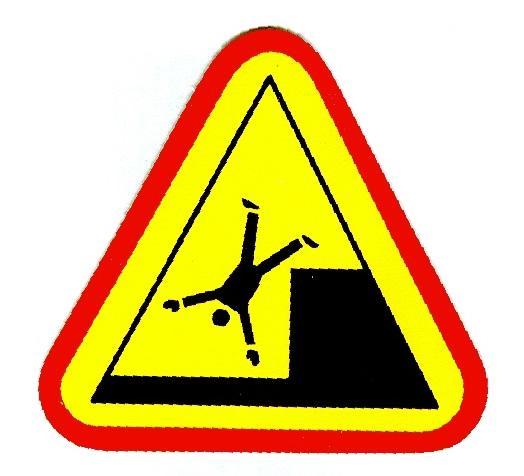 Preventing Falls in the Workplace
Preventing Falls in the Workplace
Each year falls top the list of the Occupational Safety and Health Administration’s (OSHA) leading causes of workplace injury and death. Fall protection is one of the top OSHA violations year after year. 302 workers in non-construction jobs lost their lives in 2021 after falling to a lower level on the job. Worker’s compensation claims for injury average over $36,000, and fatalities can cost a company over $1.4 million. Falls that lead to severe injury not only lead to physical, emotional and financial pain for all involved.
In 2023, OSHA created a National Emphasis Program on Falls to work to drastically reduce these issues. We are happy to report that all of our safety gate models – even the custom applications – comply with these regulations and standards.
OSHA is not the only organization that has outlined fall protection regulations and codes. ANSI and IBC also provide standards and codes for fall protection compliance. Canada’s CCOHS also has regulations for fall protection. Our pallet drop gates meet these standards as well.
OSHA Walking-Working Surface Regulations
OSHA’s Walking-Working Surface Regulation 1910 Subpart D requires a barrier be in place to guard any opening on platforms elevated four feet (4′) or higher on which an employee is working, and that the barrier be in place when the opening is not in use for handling materials.
A toe board (or equivalent) should be provided when there is exposure below to falling materials.
A standard railing consists of a top rail 42” off of the deck and an intermediate rail and must withstand a 200 pound force applied in any direction except upward.
Only a dual-gate system ensures compliance with OSHA because a dual-gate system will always have a barrier in place. A dual-gate system does not depend on an operator to remember and make an effort to close the barrier.
Single-barrier systems that meet OSHA specifications only meet OSHA when the barriers are closed. Barriers held open by a staged pallet (as is the case with a swinging gate) are in violation of OSHA.
ANSI Standards
ANSI MH32.1-2018, Stairs, Ladders and Open-Edge Guards for Use with Material Handling Structures requires a barrier to be in place to secure pallet drop areas at all times – even while the area is in use for handling materials.
Dual-gate pallet drop safety gate systems meet ANSI standards because a barrier is in place even during the active loading/unloading of material. Single barrier systems such as swing, sliding or lift-out gates DO NOT meet the standard.
In addition, our power operated safety gates ensure an active system. With power operation, workers do not have to remember to open or close the safety gate to provide fall protection, which makes it a very ergonomic solution as well.IBC
IBC – International Building Code
Section 1015 Means of Egress, Guards, outlines the codes for protection on elevated walking surfaces. More definitions can be found in Chapter 5, General Building Heights and Areas.
CCOHS – Canadian Centre for Occupational Health and Safety Fall Protection Plan
Working at heights is defined as any work where a person could fall a distance and be injured, including the use of forklift platforms and elevated work platforms. Fall protection is required in areas from heights less than 3 meters (10 feet) where there is an increased risk of injury, such as through an opening in a work surface, into operating machinery, into liquid or other hazardous substances.

